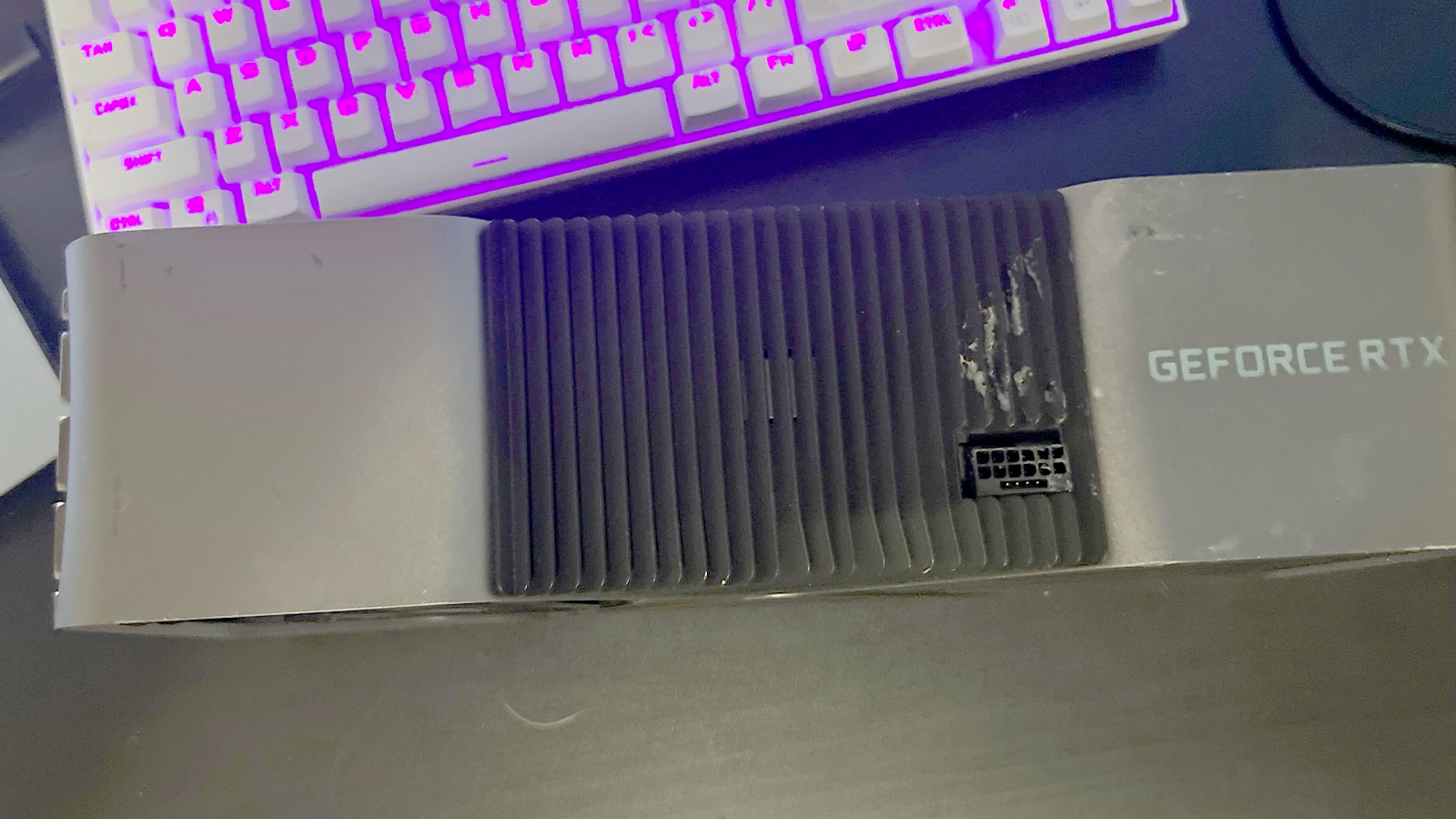
An RTX 4090 Ti prototype has been reportedly discovered in a computer junk bin. The card sports a PCB mounted parallel to the motherboard and display connectors mounted on a separate daughterboard. Redditor This_Explanation_514 made this rare find and shared it on the r/nvidia subreddit (h/t VideoCardz), although the subreddit’s moderators have since deleted the original post.
While there have been other unreleased RTX 4090 Ti leaks, this is the first time we have seen the GPU’s PCB. The original post also showed off the support bracket mounting system and its magnetic cover, found in most high-end Nvidia graphics cards to support their weight and prevent GPU sag.
The purported RTX 4090 Ti (or RTX TITAN ADA) looks about double the size of the Nvidia Titan RTX and looks substantially bigger than the already thought RTX 4090 Founders Edition. Unfortunately, the Redditor doesn’t have a 16-pin power cable, so they couldn’t power it on and confirm the graphics card’s identity at the time of writing.




But even if the GPU does work, it would’ve likely been impractical to use it daily—for either professional tasks or gaming. Since it’s an unreleased product, it would receive zero support and updates. It also has no warranty, so if you run into issues with its hardware, you’ll likely end up with a very heavy paperweight. Because of this, the original poster said that after testing the GPU to find if it works (and to know what it is), it’ll end up in a display case with other high-powered graphics cards.
The RTX 4090 Ti could’ve been Nvidia’s most powerful consumer GPU offering. Still, the U.S. ban on exporting high-end technologies to China, which includes the RTX 4090 (and will likely also include the RTX 4090 Ti if launched), is probably why Team Green canceled this product.
After all, launching a high-end product wouldn’t make sense if it is unprofitable due to a lack of buyers. Nvidia also didn’t need to compete with AMD, as its top-end offering could barely compete with the RTX 4080. Besides, Nvidia already makes a lot of money on AI chips, with its consumer business only making up a small percentage of its overall revenue.







